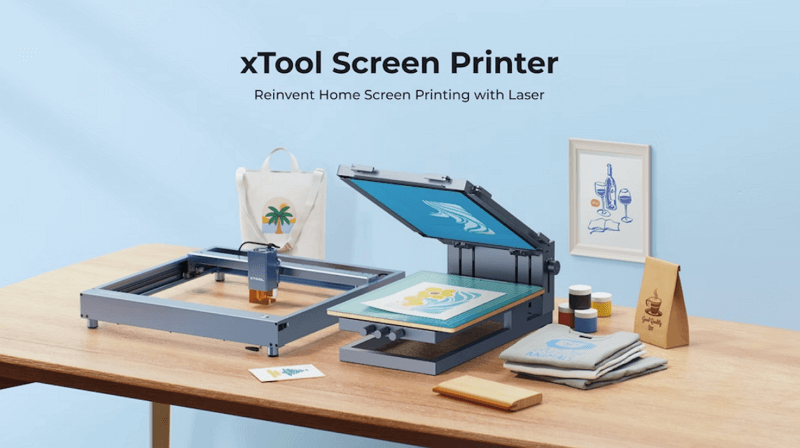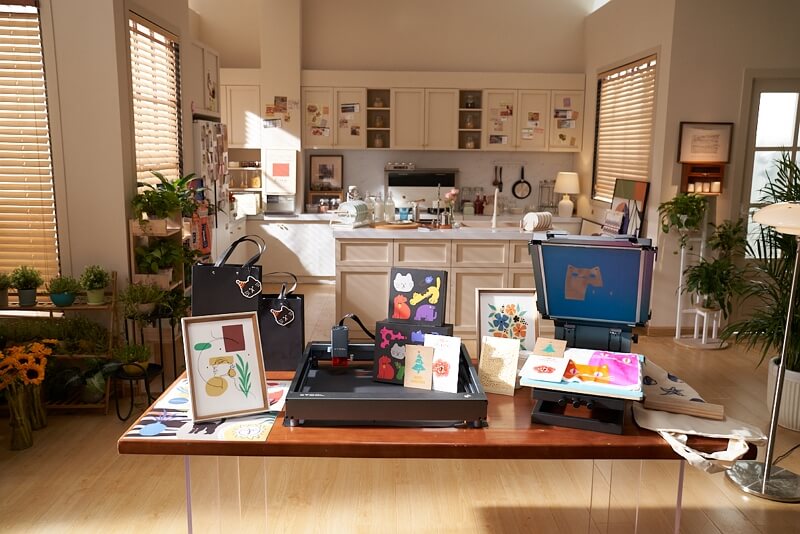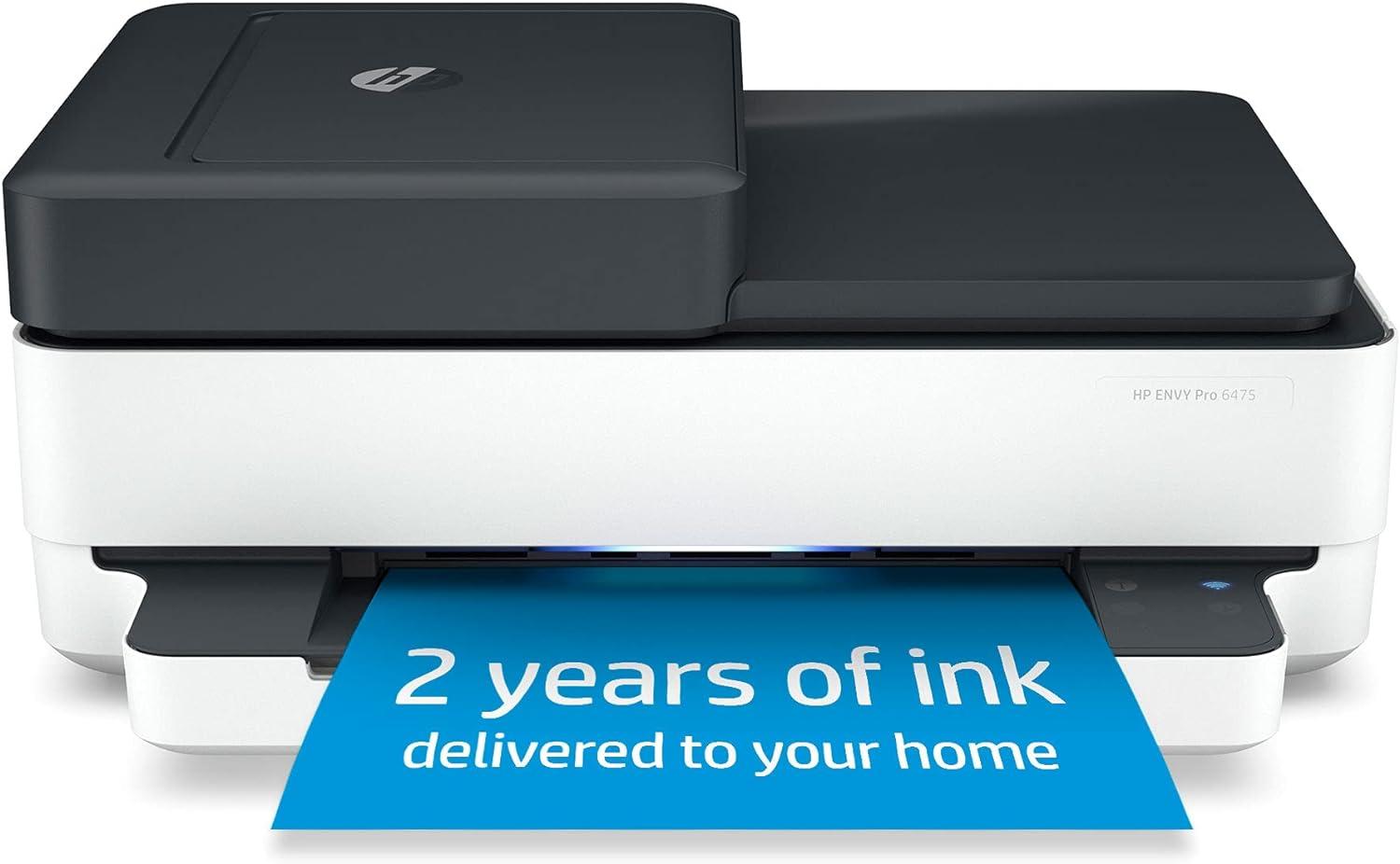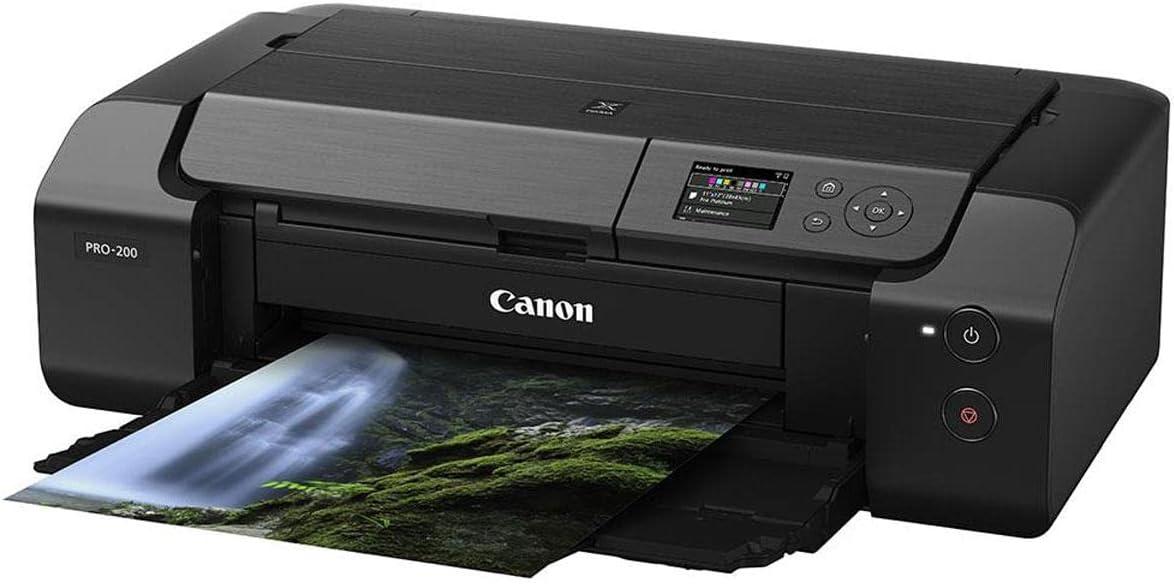Best Printers for Art Prints: Top Options for Artists
Are you an illustrator, digital artist, or photographer looking to make your creativity tangible? A printer is likely the first tool that comes to mind. But what kind of printer suits your needs best? Inkjet or laser? Are there any other affordable options that can deliver quality art prints?
This article aims to answer all your queries related to art prints, exploring the various printing options available and highlighting the best printers for artists.
In This Article
- Different Printing Options for Art Prints
- Factors to Consider When Choosing an Art Prints Printer
- Top Art Prints Printers for Different Needs
- FAQs on Art Prints Making
- Conclusion
Different Printing Options for Art Prints
When it comes to printing art, primarily there are two routes: digital printing and screen printing. Each technique carries its own set of benefits and drawbacks; and suits different types of artistic endeavors.
Digital Printing
Digital printing involves the use of modern printing devices to produce art from digital designs. You provide a printer with a digital file of your artwork, and it automatically generates a physical print. Within digital printing, there are two primary choices: inkjet printers and laser printers.
A. Inkjet Printers for Art Prints
Inkjet printers spray tiny droplets of ink directly onto the material to create images with precision and detail. Two technologies are currently common for drop formation: thermal technology and piezoelectric technology.
Thermal inkjet printers, used by brands like Canon and Hewlett Packard, heat ink to form tiny bubbles. These bubbles expand and force ink droplets onto the paper. Whereas, piezoelectric inkjet printers, patented by Epson, utilize electrically charged crystals that vibrate to push ink out of the nozzles.
Both these types of inkjet printers are great for art because they make high-quality, realistic prints with accurate colors. They can use either dye-based inks, which are bright but can fade, or pigment-based inks, which last longer but are a bit less vibrant. This makes inkjet printers popular among artists and photographers who need to print their work exactly as it looks.
Pros:
- Produce high-quality prints with vivid colors and detailed images.
- Can print on a variety of materials.
- Offer photo-realistic prints with accurate color reproduction.
- Suitable for short print runs due to their efficiency and lower upfront cost.
Cons:
- Slower printing speeds compared to laser printers.
- Printed images might fade over time, especially with exposure to sunlight.
B. Laser Printers for Art Prints
Laser printers use a laser beam to project an image onto a drum, which is then coated with toner—a fine powder. This toner adheres to the areas illuminated by the laser. The drum then transfers the toner to paper, and heat fuses the toner to the paper to create the final print. This process may seem long, but it's much quicker compared to inkjet printing. That’s why laser printers are ideal for high-volume printing jobs.
Artists can opt for laser printers when they require consistent quality for large batches of prints, such as promotional materials, or when working on projects that don't demand the color depth and variability an inkjet can provide.
Laser printers are also a good choice for artists who need to print text documents or line art with sharp, clean lines. They offer water-resistant prints, which is beneficial for art that will be handled frequently or displayed in conditions where moisture is present.
Pros:
- Fast printing speeds, ideal for high-volume printing tasks.
- Produce sharp and precise text and graphics with clean lines.
- Prints are durable and resistant to water and smudging.
- Require less maintenance than inkjet printers.
- Can handle large print jobs without needing frequent ink or toner replacements.
Cons:
- Color laser printers can be expensive to buy.
- Not as effective at producing high-quality color prints.
Screen Printing (Printmaking)
Screen printing is the oldest of four printmaking techniques. It is a traditional method that’s known for its high-quality and vibrant color prints on a range of materials.

The process begins with creating a stencil on a silkscreen, typically made from fine mesh. This stencil, which represents the areas to be printed, blocks ink in non-image areas. Ink is then spread over the screen and pressed through the mesh onto the printing surface beneath, transferring the design. Each color in the design requires a separate screen.
Screen printing is best suited for making vibrant, textured prints. Artists can layer different colors to achieve complex, multi-colored designs with a tactile quality that is difficult to replicate with digital printing methods.
Moreover, the handcrafted nature of screen printing adds a personal touch to each piece, enhancing its value and appeal in the art market. The method also allows for experimentation with various inks and substrates, enabling artists to print on canvas, paper, wood, fabric, and even metals.
Pros:
- Produces vibrant, high-quality prints with excellent color saturation and coverage.
- Can Print on multiple materials, including textiles, paper, wood, and more.
- Screen-printed items hold up well under heavy use and washing.
- Suitable for large print runs, becoming more cost-effective with quantity.
- Capable of creating unique, tactile textures.
Cons:
- Less suited for short print runs due to the initial setup effort and cost.
- Each color requires a separate screen, which makes multi-colored designs more labor-intensive.
- Not suitable for printing photographic images.
Factors to Consider When Choosing an Art Prints Printer
Selecting the right printer for art prints is a crucial decision that impacts the quality and success of your printed artwork. This investment demands careful consideration that needs to be done based on technical aspects and critical factors.
Here’s what to keep in mind:
Type of Artwork
First, consider the type of artwork you will be printing. Is it realistic photographs, detailed illustrations, or simple line art?
For photographic art prints, an inkjet printer is the best option. Screen printing excels for textured art needing vibrancy. For minimalist color art, especially in high volumes, laser printing may be a better choice.
Desired Print Size and Quantity
Each art printer has its limitations on print size. Some can manage A4 or A2 sheets, while others are compatible with A3. Select a printer that can accommodate the size of your artwork.
The quantity of prints also plays a role; inkjet printers are suited for small batches, whereas laser and screen printers are better for larger volumes.
Budget for Printers and Ink/Supplies
The cost difference among printer types is notable. Inkjets are often more affordable upfront but require frequent and costly ink replacements. Laser printers, although more expensive initially, have lower ongoing ink costs. Screen printers might be cheaper upfront, similar to inkjets, but the cost of ink remains a consideration.
Printing Surface
Not all printers are capable of printing on materials beyond paper. Only screen printers are versatile; they can print on a variety of surfaces including paper, wood, and canvas. Inkjet printers follow closely, capable of handling multiple types of paper and even fabric. On the other hand, laser printers typically print only on paper.
Maintenance Needs
While a one-time investment in a printer is substantial, ongoing maintenance needs must also be considered. Inkjet printers, for example, require frequent ink replacements and unused ink can dry out and deposit within the cartridges. Laser printers, conversely, have a longer ink lifespan and are less maintenance-intensive. Screen printers also require cleaning after each use to maintain optimal performance.
Device Connectivity
Gone are the days when USB was the sole connection option for printers, limiting them to PC use only. Modern printers now offer wireless connectivity through apps or Wi-Fi, allowing for printing directly from smartphones. Choose devices with more connectivity options.
Top Art Prints Printers for Different Needs
Here’s the main section you have been waiting for. We have researched and compiled a list of top products, organized into four distinct categories to simplify your search for the perfect product.
For Screen Printing: xTool Screen Printer + Laser Engraver

Traditionally, creating stencils for screen printing has been a labor-intensive process involving multiple steps such as emulsifying the silkscreen, exposing, drying, and cleaning, which could extend the preparation time to days. This complexity and time demand often discourage individuals from adopting this method.
The xTool Screen Printer introduces an innovative approach to screen printing. It is the first of its kind that utilize laser-engraved stencils for screen printing. With pre-made coated screens that come with an xTool screen printer, the whole job just takes 1~3 hours instead of days.
These screens are easily engraved with the xTool laser and then mounted in the EasyStretch frame. This frame features four tensioning strips and six quick-pull w
The xTool Screen Printer is a complete screen printing package that includes all essential accessories: Easy Stretch Frame, ink set, magnetic squeegee, and a laser engraver.
The printer is equipped with a vertical motion axis and a rotational axis to adjust the mesh screen at a micro-level for accuracy in prints. Another standout feature is the Hover Hinge, with a 60° free-floating pivot, which greatly simplifies bulk printing tasks. This design not only makes operation easier but also minimizes ink spillage risks.
With an xTool screen printer, a laser engraver is a necessity as it is responsible for making the stencils. You can opt for any laser engraver from the xTool laser engravers collection. The laser engraver doesn’t just help in screen printing, there’s potential to practice other printmaking techniques, for instance, woodblock printing or rubber stamps.
Key Highlights:
- Comes with Pre-Coated Stencils.
- Frame for easy-stretching and replacement of frames.
- Hover hinge for ease in bulk-printing tasks.
- Micro-level adjustment of stencil screen.
- Package includes all screen printing accessories.
For High-Quality Photo & Fine Art Prints: Epson EcoTank ET-8550

The Epson EcoTank ET-8550 is a top choice for artists and photographers looking for quality and economy in art printing. It is known for its low running costs—one ink tank can print about 3,400 pages.
The ET-8550’s cartridge-free printing delivers lab-quality images with vivid colors and crisp text. It supports a variety of media, including cardstock, glossy photo paper, and media up to 1.3mm thick.
Setup is easy, and it supports Wi-Fi, USB, and Ethernet, plus a mobile app for managing prints and ink. What stands out is the quality of photos and art prints. Unlike standard printers, the ET-8550 uses additional grey and photo-black inks for impactful prints.
It can print large 13 x 19-inch images and supports A3 prints, essential for many creative projects. Despite its price, the savings on ink, along with a built-in scanner and copier, make it a worthwhile investment. Its compact design is also a plus.
Key Highlights:
- Prints up to 5760 x 1440 dpi
- All-in-one printer; prints, scans, and copies.
- Wireless and Wired Connectivity options.
- Can print on paper and media up to 1.3mm thickness.
- Cartridge-free printing.
For Affordable & Everyday Printing: HP Envy Pro 6475

The HP Envy Pro 6475 is a budget-friendly printer that doesn't skimp on performance, making it an excellent pick for artists and creators watching their expenses. It offers a sweet spot of high-quality printing without the hefty price tag.
Design-wise, the Envy Pro 6475 sports a sleek, compact white exterior that fits nicely in any workspace. Its lightweight design and intuitive interface make it user-friendly and easy to manage.
One of the Envy Pro 6475's highlights is its versatile connectivity. With built-in Wi-Fi and USB, setting up and printing from computers, smartphones, or tablets is a breeze; you can print from almost anywhere.
The print quality of the Envy Pro 6475 is noteworthy. Thanks to its inkjet technology, it churns out vibrant and detailed prints that truly reflect the original artwork. It handles both monochrome sketches and colorful illustrations with ease, delivering vivid results.
A bonus is the printer's auto-duplex feature. It can automatically print on two sides to save time and paper and lessen the environmental footprint.
Despite its affordability, the Envy Pro 6475 offers solid performance with print speeds up to 7 ppm for color and 10 ppm for black and white. It is perfectly suited for everyday printing needs or smaller projects.
Key Highlights:
- Print, Scan and Copy functionality.
- Wireless connectivity through HP Smart App.
- Supports borderless printing.
- Compact Design.
For Large Format Art Prints: Canon Pixma Pro-200

The Canon PIXMA PRO-200 is a great choice for artists needing to print big, without compromising on print quality. While it costs more than some options, the color reproduction you get is worth it. Plus, it’s pretty fast and can handle up to A3+ size (13" x 19"), and even panoramic prints up to 39" wide.
With the PRO-200, you get prints that look exactly how you want, with fantastic color depth, thanks to its 8-color dye-based ink system. The built-in 3-inch LCD screen and Canon’s software make it easy to manage print settings and keep an eye on ink levels.
This printer gives you sharp, dry prints quickly and can print on a variety of materials, thanks to its eight-ink system. It’s perfect for professional artists or those selling prints on Etsy or their own websites. However, keep in mind it's bigger and more expensive to run than some other options, so you’ll need space for it.
Key Highlights:
- Can Print on custom-size up to 13″ x 19″.
- 8-color dye ink system.
- Printing capability through Wi-Fi.
- Can Print on an A3 sheet within 90 seconds
FAQs of Art Prints Making
What Kind of Printer is Best for Art Prints?
For digital artwork, inkjet printers come out on top due to their ability to handle fine details and a wide color spectrum. If you're looking to print on various materials and want vibrant, textured results, screen printing is your go-to.
How Do I Print High-Quality Art Prints?
The key to sharp, detailed prints lies in the digital design's resolution. Aim for a resolution of at least 500 dpi to ensure your artwork retains its quality and detail in print form.
Conclusion
Art prints are tangible manifestations of an artist’s creative vision, demanding accurate color reproduction and vibrancy in their printed form. Digital printers, especially inkjet models, are better suited for art prints due to their precision in color and detail.
Screen printing also remains a popular method for its color richness and ability to print on diverse materials. For those interested in traditional printmaking with a modern approach, the xTool screen printer is an excellent option that blends the old with the new effectively.



